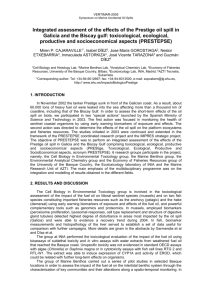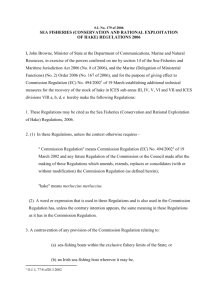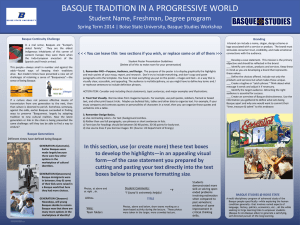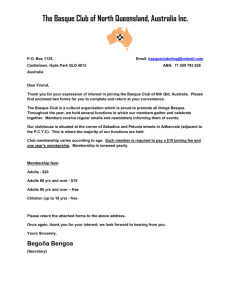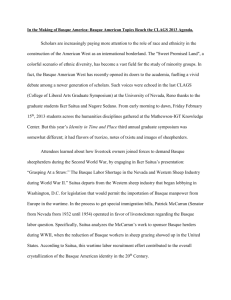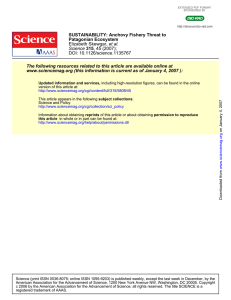Preliminary conclusions on the assessment of the biological
advertisement
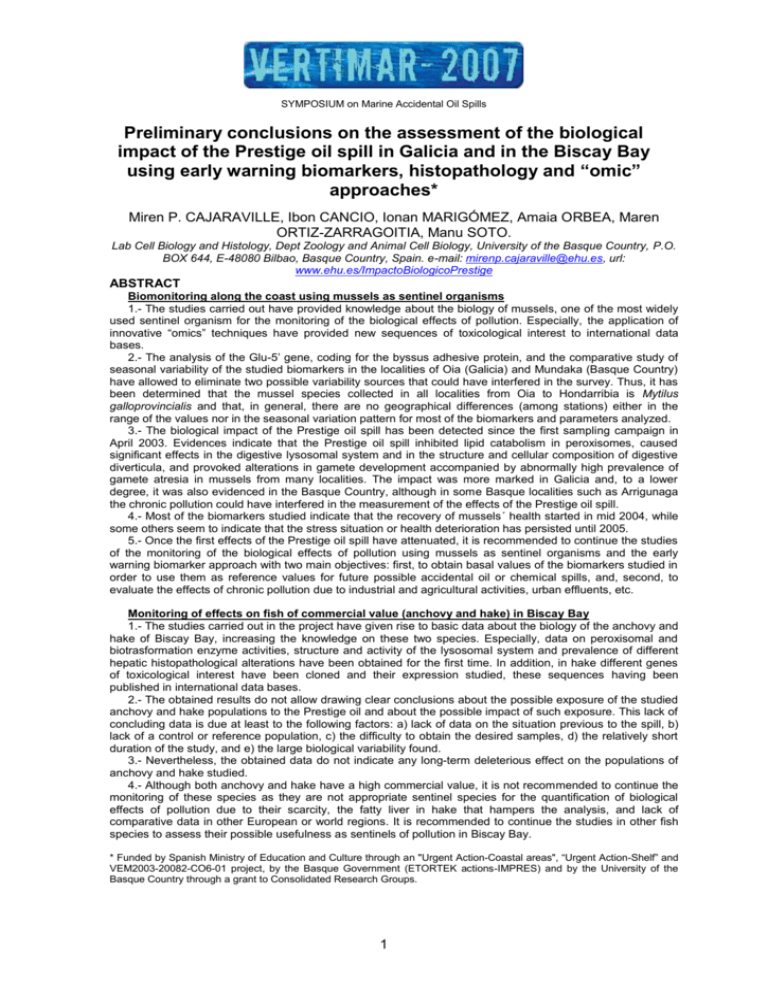
SYMPOSIUM on Marine Accidental Oil Spills Preliminary conclusions on the assessment of the biological impact of the Prestige oil spill in Galicia and in the Biscay Bay using early warning biomarkers, histopathology and “omic” approaches* Miren P. CAJARAVILLE, Ibon CANCIO, Ionan MARIGÓMEZ, Amaia ORBEA, Maren ORTIZ-ZARRAGOITIA, Manu SOTO. Lab Cell Biology and Histology, Dept Zoology and Animal Cell Biology, University of the Basque Country, P.O. BOX 644, E-48080 Bilbao, Basque Country, Spain. e-mail: mirenp.cajaraville@ehu.es, url: www.ehu.es/ImpactoBiologicoPrestige ABSTRACT Biomonitoring along the coast using mussels as sentinel organisms 1.- The studies carried out have provided knowledge about the biology of mussels, one of the most widely used sentinel organism for the monitoring of the biological effects of pollution. Especially, the application of innovative “omics” techniques have provided new sequences of toxicological interest to international data bases. 2.- The analysis of the Glu-5’ gene, coding for the byssus adhesive protein, and the comparative study of seasonal variability of the studied biomarkers in the localities of Oia (Galicia) and Mundaka (Basque Country) have allowed to eliminate two possible variability sources that could have interfered in the survey. Thus, it has been determined that the mussel species collected in all localities from Oia to Hondarribia is Mytilus galloprovincialis and that, in general, there are no geographical differences (among stations) either in the range of the values nor in the seasonal variation pattern for most of the biomarkers and parameters analyzed. 3.- The biological impact of the Prestige oil spill has been detected since the first sampling campaign in April 2003. Evidences indicate that the Prestige oil spill inhibited lipid catabolism in peroxisomes, caused significant effects in the digestive lysosomal system and in the structure and cellular composition of digestive diverticula, and provoked alterations in gamete development accompanied by abnormally high prevalence of gamete atresia in mussels from many localities. The impact was more marked in Galicia and, to a lower degree, it was also evidenced in the Basque Country, although in some Basque localities such as Arrigunaga the chronic pollution could have interfered in the measurement of the effects of the Prestige oil spill. 4.- Most of the biomarkers studied indicate that the recovery of mussels´ health started in mid 2004, while some others seem to indicate that the stress situation or health deterioration has persisted until 2005. 5.- Once the first effects of the Prestige oil spill have attenuated, it is recommended to continue the studies of the monitoring of the biological effects of pollution using mussels as sentinel organisms and the early warning biomarker approach with two main objectives: first, to obtain basal values of the biomarkers studied in order to use them as reference values for future possible accidental oil or chemical spills, and, second, to evaluate the effects of chronic pollution due to industrial and agricultural activities, urban effluents, etc. Monitoring of effects on fish of commercial value (anchovy and hake) in Biscay Bay 1.- The studies carried out in the project have given rise to basic data about the biology of the anchovy and hake of Biscay Bay, increasing the knowledge on these two species. Especially, data on peroxisomal and biotrasformation enzyme activities, structure and activity of the lysosomal system and prevalence of different hepatic histopathological alterations have been obtained for the first time. In addition, in hake different genes of toxicological interest have been cloned and their expression studied, these sequences having been published in international data bases. 2.- The obtained results do not allow drawing clear conclusions about the possible exposure of the studied anchovy and hake populations to the Prestige oil and about the possible impact of such exposure. This lack of concluding data is due at least to the following factors: a) lack of data on the situation previous to the spill, b) lack of a control or reference population, c) the difficulty to obtain the desired samples, d) the relatively short duration of the study, and e) the large biological variability found. 3.- Nevertheless, the obtained data do not indicate any long-term deleterious effect on the populations of anchovy and hake studied. 4.- Although both anchovy and hake have a high commercial value, it is not recommended to continue the monitoring of these species as they are not appropriate sentinel species for the quantification of biological effects of pollution due to their scarcity, the fatty liver in hake that hampers the analysis, and lack of comparative data in other European or world regions. It is recommended to continue the studies in other fish species to assess their possible usefulness as sentinels of pollution in Biscay Bay. * Funded by Spanish Ministry of Education and Culture through an "Urgent Action-Coastal areas", “Urgent Action-Shelf” and VEM2003-20082-CO6-01 project, by the Basque Government (ETORTEK actions-IMPRES) and by the University of the Basque Country through a grant to Consolidated Research Groups. 1
